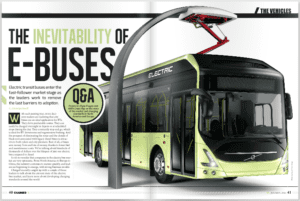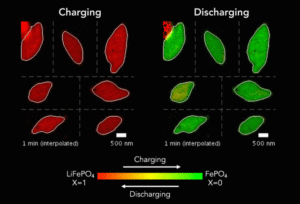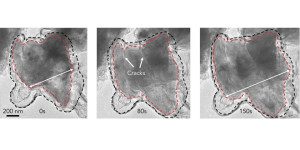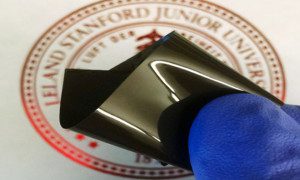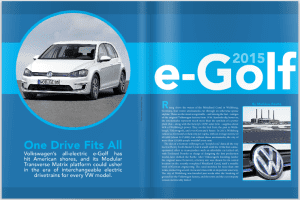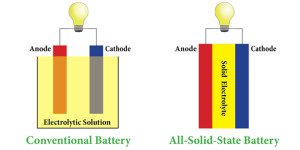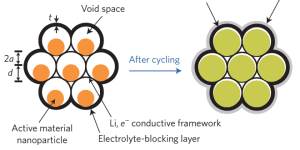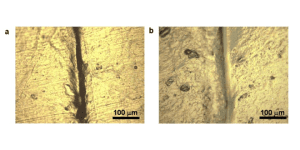Larger figure Researchers from South Korea’s Ulsan National Institute of Science and Technology (UNIST) and Stanford University have demonstrated the feasibility of a hybrid anode for Li-ion batteries using silicon-nanolayer-embedded graphite/carbon. In “Scalable synthesis of silicon-nanolayer-embedded graphite for high-energy lithium-ion batteries,” published in Nature Energy, Minseong Ko and colleagues explain that this architecture allows compatibility… Read more »
Search Results Found For: "Stanford University"
The inevitability of electric buses
Electric transit buses enter the fast-follower market stage as the leaders work to remove the last barriers to adoption. Q&A with Proterra’s Ryan Popple and ABB’s Daan Nap on the state of the market and charging standards in North America and Europe. With each passing year, more decision makers are realizing that city buses are an… Read more »
New X-ray microscopy technique reveals the secret life of batteries
In pursuit of their quest for more capable batteries, scientists are searching for better ways to observe battery particles as they charge and discharge in real time. A new technique developed at Berkeley Lab’s Advanced Light Source is providing researchers with nanoscale images of the electrochemical reactions that make lithium-ion batteries do their thing. In… Read more »
Graphene cages could be the key to silicon anodes
Battery boffins are buzzing about silicon anodes, which could store up to 10 times more energy than today’s anodes. The catch is that silicon particles tend to swell and crack during cycling, and to react with the electrolyte in unwanted ways. Now a team from Stanford University and the Department of Energy’s SLAC National Accelerator… Read more »
New material shuts down batteries at high temperatures and restarts when it cools
Stanford researchers have invented a new technology that could eliminate thermal runaway in high-energy-density batteries. Thermal runaway refers to a chain reaction in which an increase in temperature causes further increases in temperature and uncontrollable release of energy. In “Fast and reversible thermoresponsive polymer switching materials for safer batteries,” published in Nature Energy, Professor Zhenan Bao and… Read more »
2015 VW e-Golf ushers in an era of interchangeable drivetrains for every Volkswagen model
Rising above the waters of the Mittelland Canal in Wolfsburg, Germany, four iconic smokestacks cut through an otherwise sparse skyline. These are the most recognizable – and among the last – vestiges of the original Volkswagen factory from 1938. Symbolically, however, the smokestacks represent much more than the symbols of a power plant that –… Read more »
Volkswagen buys piece of solid-state battery startup
Volkswagen has bought a five-percent stake in battery startup QuantumScape. Confidential sources told Bloomberg that the Volkswagen Group plans to complete tests of QuantumScape’s technology by mid-2015, and is considering using it in VW, Porsche and Audi vehicles. Closely-held QuantumScape, founded in 2010 by former Stanford University researchers, is working on solid-state batteries, which it… Read more »
Volkswagen sees “great potential” in solid-state batteries
In a speech at Stanford University last week, Dr Martin Winterkorn, Chairman of the Board of Volkswagen, said that he sees great potential in solid-state batteries, which could boost EV range to as much as 435 miles, representing a volumetric energy density of about 1,000 Wh/l. Replacing the traditional liquid electrolyte with a nonflammable inorganic… Read more »
Pomegranate-style anode could lead to next generation of batteries
The big buzz on the EV tech scene these days is about silicon anodes, which could offer ten times more storage capacity than carbon anodes. Scientists around the world are looking for ways to overcome the remaining obstacles to using silicon for a new generation of lithium-ion batteries. Researchers at Stanford University and the DOE’s… Read more »
Scientists invent self-healing battery electrode
Researchers from Stanford University and the DOE’s SLAC National Accelerator Laboratory have developed a battery electrode that heals itself, a very useful trick indeed. “Self-healing is very important for the survival and long lifetimes of animals and plants,” said Chao Wang, one of two principal authors of the paper, which appeared in the latest issue… Read more »




